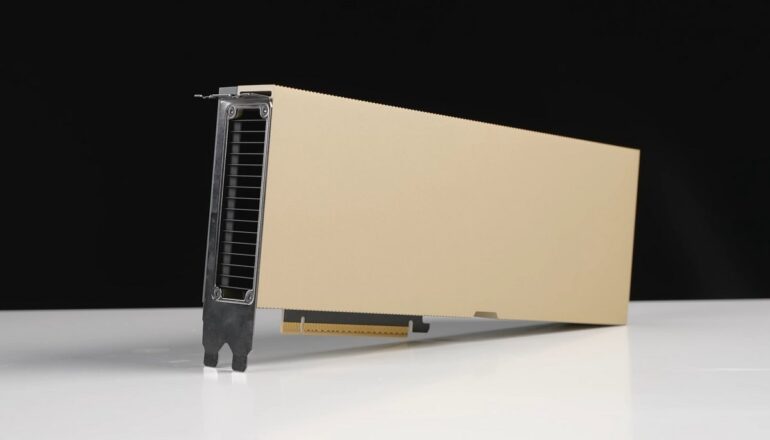TL;DR:
- NVIDIA’s H100 and A100 GPUs face a looming shortage in the AI market.
- Lamini, an AI startup, mocks NVIDIA’s supply woes in a video.
- Lamini promotes AMD’s readily available cards and their adaptability.
- AMD’s Mi250 offers competitive specs and a favorable price-to-performance ratio.
- The AI market may favor AMD as companies seek accessible solutions.
Main AI News:
In the realm of artificial intelligence, NVIDIA’s H100 and A100 GPUs have reigned supreme, securing their dominance in the industry. These graphics powerhouses have been flying off the shelves, but as demand surges, a challenging predicament emerges – their own success threatens to undermine their availability. The specter of a shortage looms large, and delivery times have swelled to an astonishing one-year waiting period. In response to this conundrum, the CEO of Lamini, a cutting-edge startup specializing in AI and LLM models, has taken a bold step to mock NVIDIA’s recent presentation through an engaging video.
In this witty video presentation, viewers are introduced to Sharon Zhou, the dynamic CEO and co-founder of Lamini. She stands in her kitchen, symbolizing the simmering anticipation for NVIDIA’s GPUs. Regrettably, the outcome is not a delightful feast but rather a somber revelation – the waiting game continues for a full 52 weeks. Undeterred, Sharon moves to her terrace, where a RADEON Instinct card is being grilled on the barbecue. This clever portrayal is an unspoken satire of Jensen Huang’s extravagant kitchen presentation of the A100. What’s more, the 52-week lead time emphasized in the video aligns with the agonizing wait customers must endure to secure one of NVIDIA’s coveted green cards.
The video’s intent is transparent: it seeks to highlight the immediate availability of AMD’s graphics cards. Notably, Lamini has a longstanding partnership with AMD and is well-versed in utilizing their hardware. This reassurance is invaluable to their clientele, as it signifies Lamini’s capacity to swiftly adapt its hardware offerings without subjecting customers to interminable waiting periods.
As for AMD’s hardware itself, the Mi250 boasts an impressive 128 GB of HBM2e memory. Its computational prowess is quantified at 362 TFLOP in FP16, while the Mi250x surges slightly ahead at 383 TFLOP. In contrast, NVIDIA’s H100 offers a maximum of 94 GB, with a performance rating of 312 TFLOP in FP16 and occasional peaks reaching a staggering 624 TFLOP. On paper, AMD’s cards exhibit remarkable capabilities, although NVIDIA’s offerings maintain an edge in raw power. Additionally, the Mi250 offers a striking price advantage, priced at approximately €13,000 compared to NVIDIA’s premium tag of over €30,000 for the H100. This price-to-performance ratio firmly favors AMD, making it an attractive option for budget-conscious AI enthusiasts.
The impending question remains – how will the market respond? With the AI sector surging at an unprecedented pace, it seems improbable that enterprises will sit idly for a year, awaiting the elusive H100. As the adage goes, “For want of blackbirds, eat thrushes!” AMD’s moment in the sun may be imminent as companies seek accessible solutions to fuel their AI endeavors.
Conclusion:
The AI market is undergoing a significant shift as NVIDIA’s H100 and A100 GPUs grapple with supply shortages. Lamini’s satirical take on the issue, while promoting AMD’s readily available cards, underscores the urgency for accessible solutions in the AI sector. AMD’s Mi250, with its compelling specs and attractive price-to-performance ratio, stands poised to capture market share, potentially altering the competitive landscape. Companies are unlikely to tolerate year-long waits for GPUs, making AMD’s immediate availability a compelling proposition.

